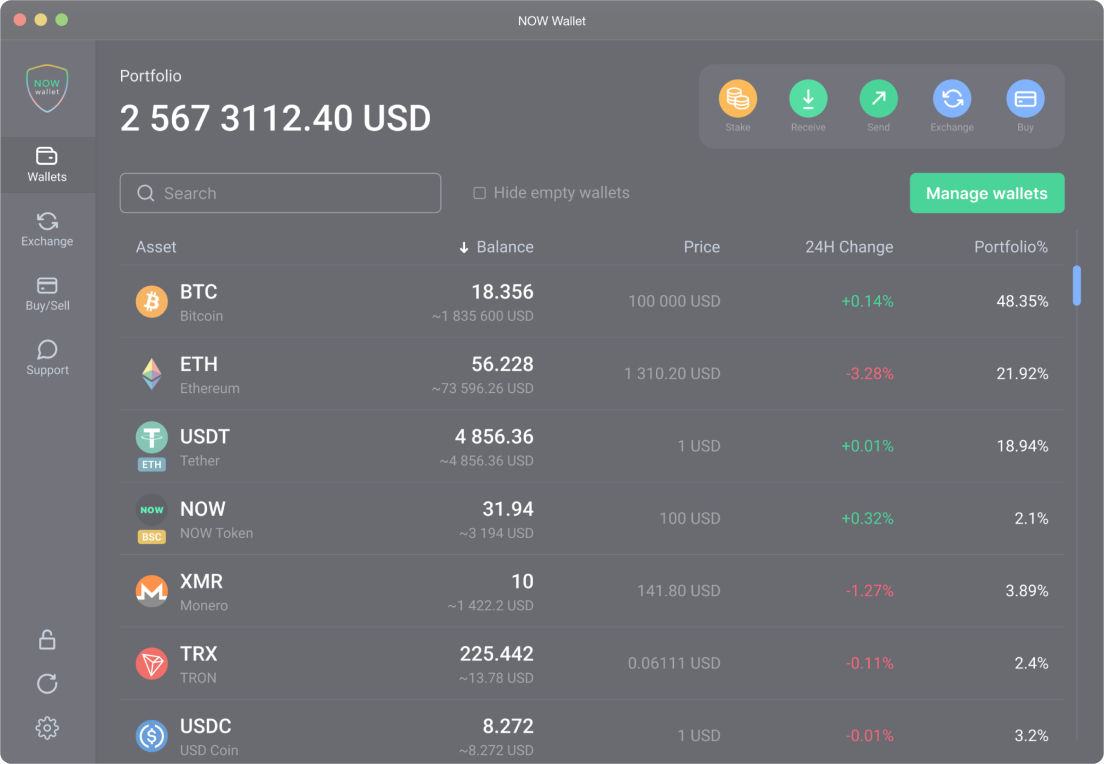Manage your XRP
with NOW Wallet



Available on 3 networks:
How it works
How to buy XRP with card
- Pick XRP as the currency you want to buy.
- Choose a fiat currency to buy XRP with.
- Enter your card details and the recipient's address if you are sending to a third-party wallet.
- Receive your XRP in approximately 5 mins!
How to exchange XRP
- Pick XRP as the currency you want to exchange.
- Choose the crypto asset you’d like to get for your XRP.
- Enter the recipient's address if you are exchanging to a third-party wallet.
- Receive your exchanged assets in approximately 5 mins!
What is XRP (XRP)
History of Ripple
Initially, Ripple was designed as a money transfer network meant to replace national payment systems, such as SWIFT. Ripple’s goal was to speed up the currency transfer while decreasing associated fees. It was founded by Jed McCaleb, Arthur Britto, and David Schwartz, and it entered the crypto market in 2012.
Ripple network operates on an open-source and peer-to-peer decentralized platform. It allows transmitting money without any physical currency actually moving. The network doesn’t run either a proof-of-work or a proof-of-stake principles. However, it uses its own consensus mechanism, which is different from all other blockchains and allows faster and more efficient operations. In the consensus protocol, the validators come to an agreement on the order and outcome of XRP transactions every 3-5 seconds.
Ripple and XRP - the difference
While Ripple is the name of the company and the network, XRP is the name for its native cryptocurrency. Its primary utility is paying fees for transactions within the network.
XRP plays an important security service within the Ripple network. Every transaction requires a transaction commission - which is a tiny amount of XRP that is being destroyed. This commission is insignificant to any users, even to those who conduct extremely high-volume transactions. XRP transaction fees cost only $0.0002 per transaction on average!
At the start, Ripple issued 100 billion XRP and the protocol rules prohibit new emissions. Therefore, the users of the network can choose not only XRP but also any other currency that will be considered a debt instrument within the network.
Bitcoin (BTC) vs. Ripple (XRP)
XRP and BTC were created for different purposes, therefore they are not in direct competition. XRP was designed to solve the specific issue of settling cross-border transactions, whereas BTC is the most accessible cryptocurrency traded globally. Also, XRP has a great advantage over BTC in terms of transaction speed and costs.
However, Bitcoin can be mined by anyone, and Ripple only allows selected network participants to validate transactions. It means that the Ripple system can not be called truly decentralized, which goes against this philosophy of decentralised finances. Some large enterprises use Ripple as a transaction platform. Santander Bank and Bank of America are using Ripple, which is a good sign of the coming mass adoption.
